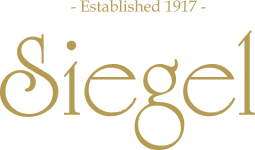At Siegel Leather, our commitment to tradition includes not just the leather we supply, but also the stories and heritage behind it. Among our most celebrated materials is Sokoto™ goatskin, a uniquely durable, finely grained leather sourced from northern Nigeria and cherished by generations of master bookbinders.
This article explores the historical significance of Sokoto™ goats, as documented in two rare publications we proudly feature on our homepage:
- Hides and Skins Markets of the World by Freudenberg (1959)
- Report of the Committee of the Society of Arts on Leather for Bookbinding (1905)
A Rare Book with Deep Industry Insight
One of our prized possessions at Siegel is an original copy of Freudenberg’s 1959 Hides and Skins Markets of the World, privately published and given directly to our firm upon release. We’ve since acquired additional copies as they surface among collectors, a testament to the enduring value of this work.
Freudenberg provides rare insight into traditional tanning methods in regions like northern Nigeria. He was among the first to document the use of bagaruwa (African acacia pods) and other native botanicals in the production of Sokoto™ Goatskin, a process passed down through generations.
Goatskin vs. Goat Hide: A Matter of Accuracy
A common misconception in the leather world is referring to goatskin as “goat hide.” This is a technical inaccuracy. In proper nomenclature:
- Hides come from large animals (cowhide, buffalo hide)
- Skins refer to smaller animals (goatskin, calfskin, sheepskin)
So while “goat hide” may sound familiar, the correct and professional term especially in fine bookbinding circles is goatskin.
Clarifying the “Niger” Misnomer
Many veteran bookbinders who trained on Nigerian goatskin decades ago colloquially referred to these leathers as “Nigers.” While this term was widely used in the trade, it is technically incorrect:
The skins were not from Niger. As of 1959, Niger had never exported hides or leather.
The proper origin is Sokoto, Nigeria, and the correct reference is Sokoto™ goatskin, a name we proudly trademarked to preserve authenticity and correct historical inaccuracy.
Cockerell’s Endorsement: A Testament to Quality
The renowned British bookbinder Douglas Cockerell, a leading figure in the Arts and Crafts movement, often worked with Sokoto™ goatskin. Known for his attention to durability, tooling performance, and aesthetic refinement, Cockerell found Sokoto™ skins to be uniquely suited for high-end bookbinding.
His surviving works, many of which are displayed in museum and university collections feature Sokoto™ goatskin covers praised for their fine grain, deep dye absorption, and lasting beauty.
Why Sokoto™ Remains a Specialty Leather for the Ages
Today, Siegel Leather continues to offer Sokoto™ Traditional and Sokoto™ Morocco, true descendants of the same artisanal tradition described by Freudenberg and used by Cockerell.
These leathers are:
- Vegetable-tanned using indigenous botanicals
- Naturally grained – no embossing or mechanical finishing
- Ideal for gold tooling, blind tooling, and archival rebinding
- Trusted by conservators, master binders, and specialty libraries globally
Want to Learn More?
We’re proud to share these stories as part of our mission to keep the art of bookbinding leather alive and respected. Have questions or insights about Sokoto™ goatskin or historic tanning techniques?
Contact us at sales@siegelleather.com Or call us at +1 (336) 293-7624

